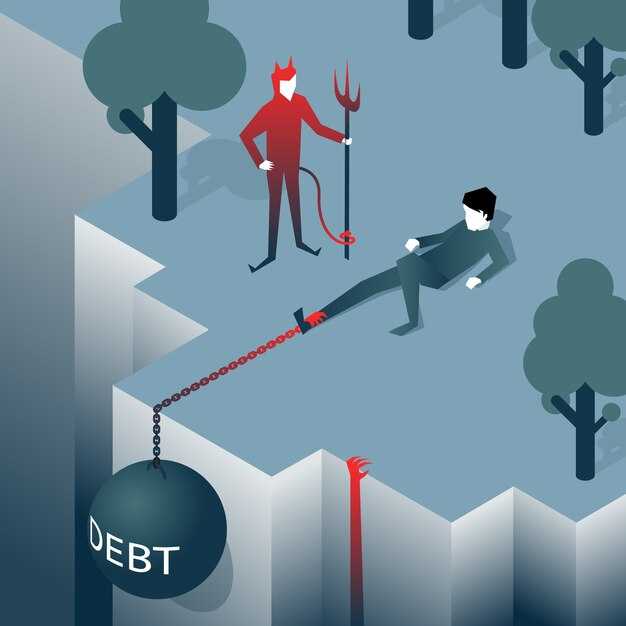Avoidant men often project an image of being unbothered — composed, aloof, untouchable. Yet this apparent indifference is not strength; it’s avoidance rooted in fear: fear of being wanted and fear of being needed. If you’ve ever been with a man who pulled back the closer you got, you know the pattern well. One moment he’s engaged, laughing and opening up; the next he goes quiet, freezes emotionally, or vanishes, leaving you bewildered and spinning with questions. You are not imagining it, you are not “too much,” and you are far from alone. What you’re encountering is an avoidant attachment style. Here’s the paradox worth holding onto: his coldest behavior often signals how much he actually cares. Those walls rise not because he feels nothing, but because he feels intensely — and that intensity terrifies him. That’s why so many women get stuck: chasing pushes him farther away.
There is, however, a way to change the dynamic once you understand the psychology behind avoidance. Instead of burning energy on pursuit, you can use strategies that bypass his defenses and invite him to pursue instead. Below are seven psychological “turn-ons” that disarm avoidance and encourage genuine interest. By the end you’ll be better able to tell whether he’s someone to invest in or someone who’s just playing games.
Why do avoidant men appear so unaffected by intimacy, affection, or basic emotional closeness? The explanation is straightforward but powerful: it’s not that they lack feeling, it’s that feeling overwhelms them. Avoidant attachment often forms in childhood — through inconsistent care, repeated disappointment, rejection, or shame. When vulnerability proved painful, the natural reaction became to withdraw and rely on self-sufficiency. As adults that pattern shows up as emotional distance, withdrawal when things get serious, or an attitude of being “above it all.” The twist is this: the more he actually likes someone, the harder he tends to clamp down. Indifference requires no effort; genuine attraction raises the stakes, and higher stakes trigger protective armor. That sudden flip from warm to cold is often not a loss of interest but a sign that his feelings are real and his fear of losing control has kicked in.
Many women understandably respond to his withdrawal with panic and pursuit — calling more, texting more, trying to close the gap. To him, that confirms the nightmare that intimacy equals suffocation and freedom will be taken away, so he retreats further. This is what can be called the avoidant paradox: behaviors that resemble rejection are frequently proof of emotional investment. The colder he seems, the more affected he truly is. But awareness alone isn’t enough; it should change your approach. Don’t analyze every message or contort yourself emotionally. Instead, adopt a different playbook — one that doesn’t reward avoidance, and instead makes his defenses irrelevant. The seven psychological turn-ons below aren’t manipulative hacks; they’re rooted in attachment dynamics and human psychology. Used consistently, they create safety, attraction, and breathing room for an honest connection without begging or chasing.
Turn-on number one. Honor your own independence the way he protects his. Nothing attracts an avoidant man more than a partner who has a full life, defined boundaries, and a clear identity apart from him. He fears being swallowed by closeness and equates merging with loss of self. When you visibly value your own time, goals, and solitude, you neutralize that fear. Independence isn’t just appealing — to an avoidant it can be erotically attractive. Seeing you thrive on your own signals, “She won’t smother me; she has her own world.” That sense of safety allows attraction to grow. Many women fall into over-giving and constant availability; the opposite — maintaining your own life — creates the freedom he needs to genuinely approach. The paradox: the less you appear to need him, the more he tends to want you.
Turn-on number two. Keep an element of mystery. Avoidant men often crave novelty but recoil from predictable intimacy. Once they feel they’ve figured everything out, excitement fades and walls rise. A continuing air of mystery keeps curiosity alive. This isn’t about deceit or theatrical games; it’s about staying dynamic and revealing yourself in layers. Bring up a surprising opinion, pick up a new interest he didn’t expect, let new facets of your personality emerge over time. Each fresh layer invites him to stay engaged because he senses there’s more to discover. Avoidants prefer that not everything be on the table at once — they like the feeling that chapters remain unread. Be interesting to yourself first; in doing so you naturally remain interesting to him.
Turn-on number three. Remain composed instead of chasing. When he pulls away, the default reaction is often panic: frantic texts, calls, and showups that only confirm his belief that closeness will swallow him. By staying calm, continuing your life, and responding with measured confidence, you change the narrative. Rather than appearing needy, you become steady and self-contained. That steadiness breeds curiosity in him: “Why isn’t she chasing me? Did I overestimate my importance?” That doubt can re-spark attraction. Calm confidence signals that your joy and identity aren’t contingent on him, which increases your value in his eyes. The paradox here is clear: the less you chase, the more magnetism you create.
Turn-on number four. Reward reliability, not crumbs. A common trap is responding emotionally to small, inconsistent efforts — lighting up over a short text after days of silence. That pattern teaches low effort is sufficient, which perpetuates avoidant behavior. Human beings learn through reinforcement: rewarding minimal investment yields minimal investment in return; rewarding real effort encourages more of it. Match your energy to his level of consistency. When he makes plans, follows through, and shows up, offer warmth and engagement. When he slips into breadcrumbing, remain neutral — don’t punish, but don’t over-invest either. Calibrate your responses. When crumbs stop being fed major reactions, he discovers the only path to meaningful attention is through steady effort, and the dynamic shifts accordingly.
Turn-on number five. Make access earned. When someone can reach you anytime without effort, their perceived value in that person’s mind declines. This is especially true for avoidant men who may exploit easy availability to coast emotionally while keeping you interested. Setting standards and boundaries communicates that your time and attention are things to be respected. Boundaries are not barricades; they’re a request for respect. Saying, “This is how I expect to be treated,” and living by it creates a gentle challenge — and avoidant men are often wired to respond to challenge. It signals self-respect: you’re valuable, your time matters, and access must be earned. The paradox: requiring effort doesn’t push him away — it draws him in, because people value what they invest in.
Turn-on number six. Let him have opportunities to be protective and competent. Avoidant men rarely admit it openly, but many still want to feel needed in a non-suffocating way — to be useful, to contribute, to show strength. When given small, safe chances to step up (asking his input on something he knows, letting him help with a practical problem, acknowledging his competence), he feels seen and capable. This isn’t about playing helpless; it’s about recognizing and appreciating what he brings. Feeling competent feeds attraction, and as he experiences being useful without pressure, his fear of entrapment softens. The paradox: when he’s allowed to protect in healthy ways, he feels safer and less likely to flee.
Turn-on number seven. Walk away with composure and standards intact. Nothing pierces an avoidant man’s defenses like the real risk of losing you — not through threats or dramatic ultimatums, which simply confirm stereotypes of emotional instability, but through calm, dignified distance. Choosing yourself without theatrics — refusing to accept less than you deserve and stepping back when needs are unmet — lands differently. It’s not punishment or manipulation; it’s a clear statement of self-worth. That quiet resolve is rare and profoundly impactful. The paradox: showing you are willing to let him go often makes you irreplaceable in his mind. Even if he doesn’t change, you preserve your dignity and standards.
Now for the filter: not every avoidant man deserves long-term investment. Some are genuinely wrestling with their patterns and want to grow; others are simply addicted to the chase and control with no intention to commit. You can’t reliably tell the difference by distance alone — both types will pull away — because both can wear the mask of indifference. The real distinction lies in honesty. Someone who wants to change will admit their tendency to withdraw: “I pull back sometimes; I get scared, but I care and want to work on it.” The admission, accompanied by effort, signals worthiness. The other type deflects, lies, blames busyness, gaslights you into thinking you’re imagining things. That’s not honesty; it’s manipulation. You can work with imperfect effort; you cannot work with consistent dishonesty. Use honesty as your filter and you’ll save years of frustration.
Flip the perspective: when you begin to embody these qualities, the avoidant man faces the real cost of losing you. Initially he may reassure himself with armor — “I’m fine without her” — but eventually reality intrudes. Dating others often highlights what was unique about you, because few partners understand avoidance psychology. Many respond to withdrawal with more pursuit, few hold boundaries or maintain mystery. The avoidant who once took you for granted may later feel regret as he recognizes that you didn’t panic, that you kept your independence, that you rewarded consistency and required earned access, that you allowed him to feel protective and also walked away with grace. He may realize he lost someone rare: a partner who could accept him as he was while gently inspiring growth. By the time that clarity arrives, you may already be building healthier love with someone who can meet you where you are. That is the price avoidant men pay when they prioritize defense over connection.
Bottom line: avoidant men are not incapable of love — they are terrified of it. Understanding this changes everything. Instead of chasing, you cultivate the conditions where authentic attraction can grow: independence, mystery, calm confidence, rewarding consistency, clear boundaries, opportunities to feel protective, and the readiness to walk away with dignity. If he can’t rise to meet you under those conditions, that’s not your loss; it’s his. You’ve shown up as the kind of partner who can love without losing herself — and that is true power.
Which of these seven resonated most with you? Leave a comment below — every message is read. For deeper guidance, see the link below for a free guide on spotting deception before it hurts you, and watch the video linked here that explores the painful cost an avoidant ex faces when he realizes what he lost. See you there.













